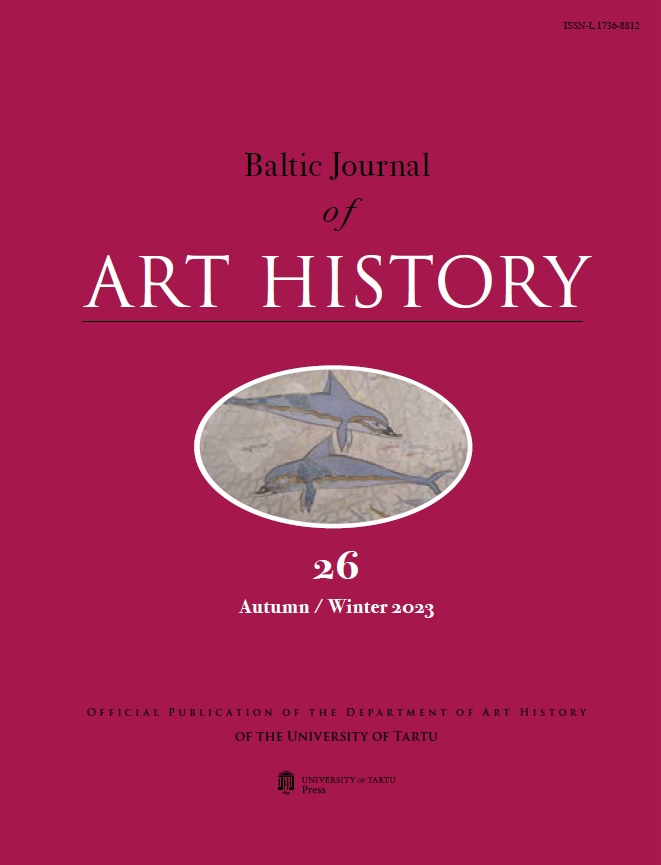Dorpater Studentenleben in der Druckgraphik als Teil der deutschbaltischen Identitätsbildung im 19. Jahrhundert
DOI:
https://doi.org/10.12697/BJAH.2023.26.04Keywords:
print graphics, visual culture, student fraternities, cultural identityAbstract
In the 19th century, the return of the German-language university played a crucial role in the education, science, and cultural history of the Russian Empire’s Baltic provinces. The newly established German-language university enjoyed significant autonomy, attracting professors primarily from Germany. Following the German university model, students began forming corporate associations in the early decades of the 19th century. Despite being officially prohibited at the start of the century, the legalisation of student organisations in Tartu in 1855 led to their flourishing over the next few decades.
Nineteenth-century societal developments in Europe brought significant changes in communication. Print graphics primarily drove visual aspects during the first half of the century. Technological advancements allowed for more extensive and affordable print runs, facilitating wider distribution of images and enabling authors as well as publishers to respond swiftly to public needs and expectations. These images depicted local life and prominent buildings, contributing to developing national identities in 19th-century Europe by fostering patriotic sentiments and regional self-awareness. Tartu emerged as a local centre for print graphics in the second quarter of the 19th century. Initially, engravers and artists focused on portraying new university buildings, but from the 1850s onwards, they also began depicting colourful student traditions. Given that Baltic-German fraternities played a significant role in Tartu student life, the customs and lifestyle of Tartu students were portrayed. These printed images of student life in Tartu were created for broader audiences in elegant albums, or for circulation within the narrower circle of fraternity members and alumni.
An exciting and little-known example of this is Ludwig Ulmann’s picture series from 1873, created for the 50th anniversary of the Tartu Baltic-German student fraternity Fraternitas Rigensis. The series provides a rare glimpse into the self-reflection of 19th-century Tartu fraternities. Although Ulmann, an amateur artist, approached the theme with satirical and comical ease, a closer analysis reveals the rich traditions within the Baltic-German fraternities. Most selected scenes are based on historical student practices, local personalities, or events. However, Ulmann also drew inspiration from the famous programmatic Wilhelm von Kaulbach mural in Berlin’s Neues Museum, cleverly incorporating elements from classical art into his work.
In the local visual culture of the 19th Century, Tartu University quickly found its place as a distinct theme. The dissemination of these images among educated German minorities in all three Baltic provinces reinforced Tartu University's image as a unifying force in Baltic-German society. The Imperial University of Tartu served as a natural and efficient platform for the local German-educated intelligentsia, and its students and alumni quickly developed a shared mentality. More specifically, the Baltic-German student fraternities operating at Tartu University actively supported local German cultural and intellectual self-awareness, particularly the more conservative and preservative wing. In this way, the printed graphics depicting student life in Tartu are now primarily significant and poignant testimonies of the former glory days of the Baltic-German fraternities.

